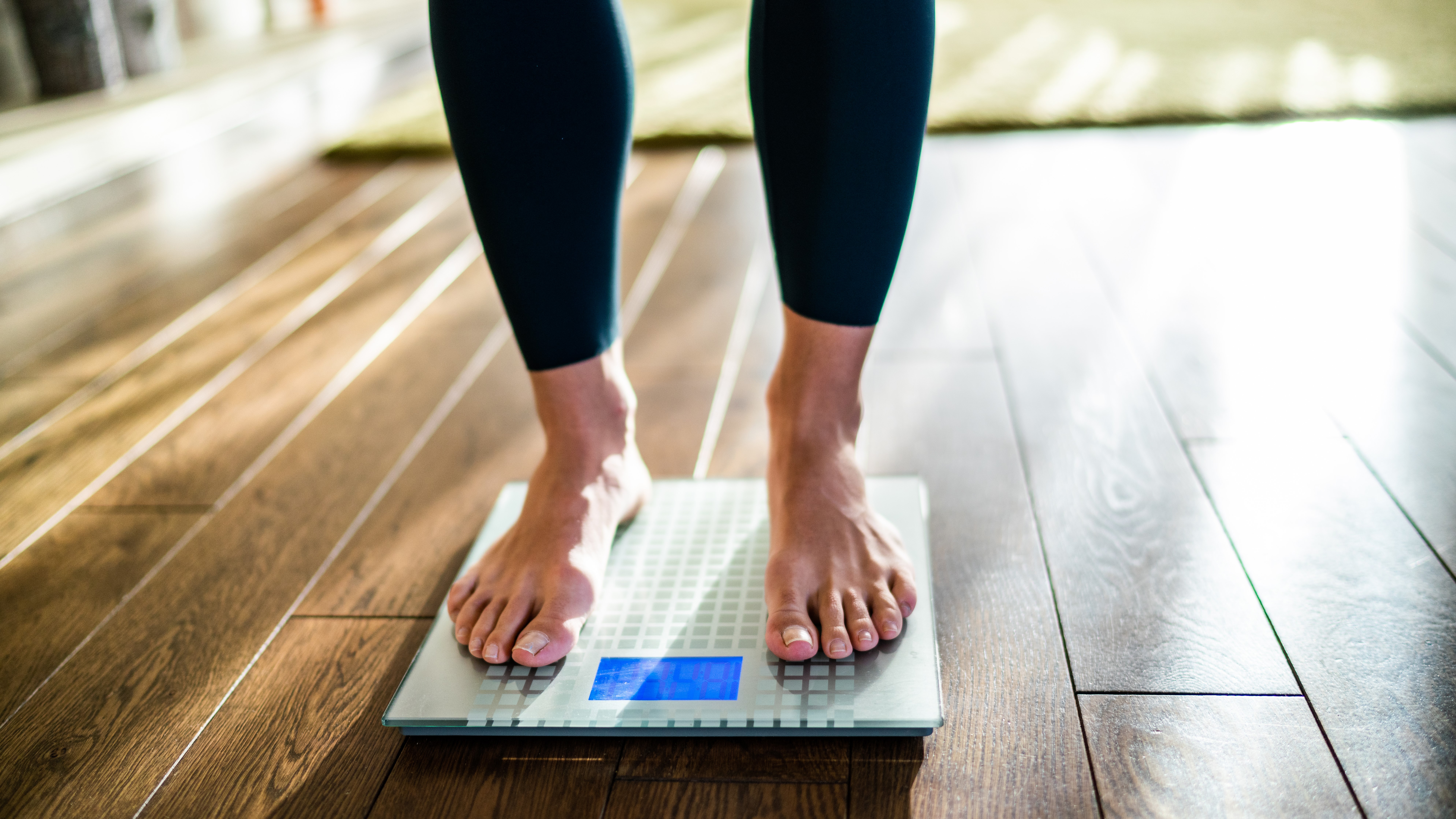Should you get a body comp analysis to help with performance – and if so, when?
If you’re an athlete, a body comp analysis can things that your sports watch can’t

Curious to know what’s happening under the hood when it comes to your body? As athletes, we’re getting more than a little obsessed with health and performance metrics, partly due to advances in training methodology but mostly due to handy technology like GPS watches, which can reveal all sorts of fascinating data about the time you spend in your trail running shoes, from your average heart rate and sleep quality to calories burned and VO2 max.
Smart watches like the Apple Watch are only getting smarter, but one thing they can’t do (yet) is tell you what the composition of your body is in terms of elements like fat and muscle. To get that information, you’ll need a body comp analysis machine. I worked in a gym in Vail, Colorado for seven years, where I used the body comp analysis machine with clients during my nutritional coaching sessions. They’re widely used by coaches and elite athletes as a training tool and if you’re big on data or trying to improve your performance, you might want to get analyzed. In this article, we explain what a body comp test entails, what it tells you, and when to do it for the best results.

What is a body comp test?
A body comp test performs a scan to calculate the composition of fat versus non-fat in your body. To take the test, you simply stand on a machine that looks like a large scale and hold onto two sensors for about 30 seconds. During this time, a harmless electrical current travels through your body. The current meets less resistance when flowing through fat, which has a lower water content, and higher resistance when flowing through muscle.
At the end of the scan, you’ll receive a printout which breaks down the percentages of the composition of the following elements in your body:
- Fat
- Water
- Muscle
- Bone
This information will usually be further broken down between each of your limbs and your torso. The report may also contain other useful information, such as your basal metabolic rate and a more accurate reading of your BMI.

Are body composition machines accurate?
It depends on what type of machine you’re talking about. The ones we’ve described here, which you’ll usually find at gyms and wellness centers, are sometimes called four-point machines because they have four points of contact with your body – your hands and your feet. These are considered more accurate than so-called two-point machines, which only come into contact with the soles of your feet, like this one on Amazon, which you can order online and use at home.
Home body fat scales, as they’re better known, weren’t found to be as accurate in a 2016 study, however that doesn’t mean they’re without merit. Though the individual readings may not be as precise as those from four-point machines, the ability to take regular readings at home can still help you track changes in your body composition and that may hold value for you. This is also a much more affordable way to measure your body composition.
Advnture Newsletter
All the latest inspiration, tips and guides to help you plan your next Advnture!

Should you do a body comp analysis?
A body comp analysis is one way to get a more detailed picture of your overall health than you’ll get from standing on a scale, the pinch test, calculating your BMI or glancing in the mirror. I found it useful for my clients who were usually seeking to lose fat and gain muscle – performing an analysis at the beginning of their program and again 30 days later nearly always revealed that they had made much more progress than they realized, which was motivating. The Olympics committee comments that it “may be used to assess the effectiveness of an exercise or dietary intervention, or be used to monitor the health status of an athlete.”
A single body comp analysis could reveal if you have more fat than you realize – too much fat and not enough muscle is strongly associated with diseases like heart disease, stroke, type 2 diabetes, and certain types of cancer. Further, when it comes to ultrarunners, a 2009 study found that faster men and finishers have lower body fat, around eight percent.
It could also tell you when you don’t have enough body fat, which could be an issue for athletes. Fat is an important storehouse for energy when you’re on a long run and can’t access food and it also houses hormones and plays an important role in immunity.
Forgetting about fat for a moment, it can also show you how your muscle mass is distributed throughout your body, and reveal any potential imbalances between your right and left legs, which could be affecting your performance. However, much of this can also be achieved with a good old fashioned measuring tape.
What’s potentially more effective than a single scan, however, is a series of body comp analyses performed over a period of time to show changes in your body and reveal how a program of training and nutrition is helping or hampering your goals. Ultimately, a body comp analysis isn’t essential, but it can be both interesting and useful, especially if you’re able to do multiple analyses over a period of time.

When should you do body composition analysis?
If you’re curious about doing a body comp analysis, the best time is when you’re beginning a new training regime and want to use the information to help track your progress, then again at regular intervals of perhaps every two-four weeks during the program. This allows you to monitor your performance and also to tweak the program if there are elements which aren’t producing the desired results.
While an at-home body comp scale might come with a price tag of around $50 for the cheaper models, gyms might charge up to $300 per scan, which isn’t exactly budget-friendly. As I mentioned at the beginning of this article, however, they are often included in coaching sessions and training programs, so it may be worth hunting for a package deal.
Finally, it is advised to do a body comp reading with a coach or trained professional who can help you better understand the significance of the results.
Julia Clarke is a staff writer for Advnture.com and the author of the book Restorative Yoga for Beginners. She loves to explore mountains on foot, bike, skis and belay and then recover on the the yoga mat. Julia graduated with a degree in journalism in 2004 and spent eight years working as a radio presenter in Kansas City, Vermont, Boston and New York City before discovering the joys of the Rocky Mountains. She then detoured west to Colorado and enjoyed 11 years teaching yoga in Vail before returning to her hometown of Glasgow, Scotland in 2020 to focus on family and writing.

